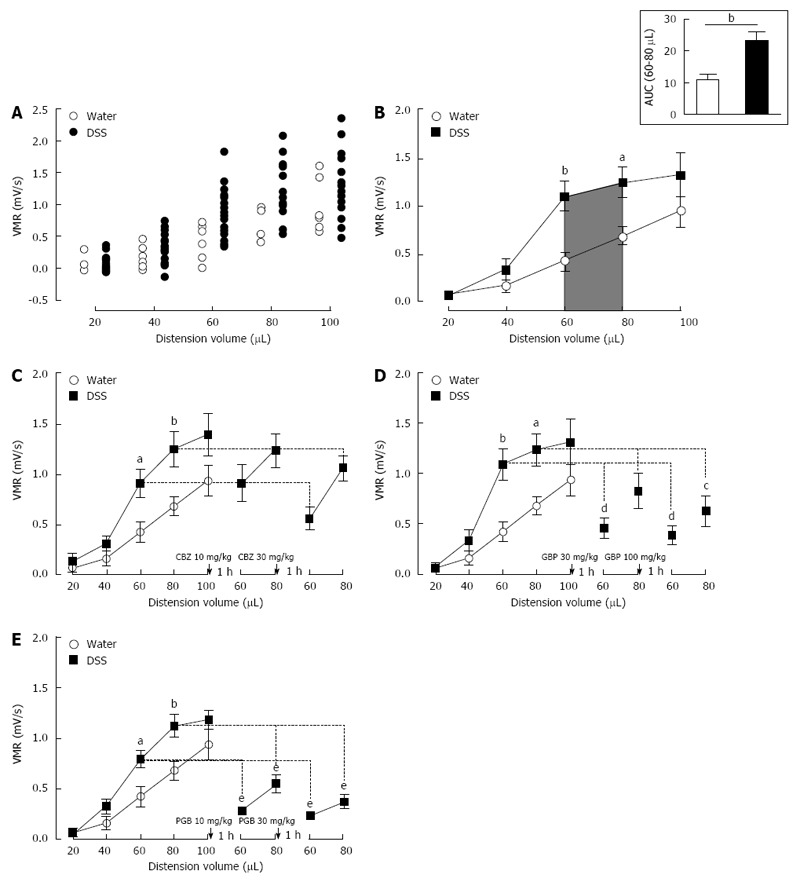Figure 3.

Mouse model of inflammation-associated colonic hypersensitivity and assessment of pregabalin, gabapentin and carbamazepine treatments. A: All animals were considered as sensitized by dextran sulfate sodium (DSS) treatment. Distribution of visceromotor response (VMR) values highlights an increased response in DSS-treated (black circles n = 22) compared to control (white circles n = 7) mice; B: Assessment of colonic sensitivity in DSS-treated (n = 22) and control mice (n = 7) displays significant differences between groups for 60 and 80 μL distension volumes. Top right insert represents the area under the curve (AUC) between 60 μL and 80 μL; C: Carbamazepine (CBZ) administration (10 and 30 mg/kg s.c.) has no significant effect on VMR response in DSS-treated mice (DSS n = 6; Water n = 7); D: Both doses (30 and 100 mg/kg s.c.) of gabapentin (GBP) induce a VMR reduction in DSS-treated mice (DSS n = 7; Water n = 7); E: Pregabalin (PGB) administration (10 and 30 mg/kg s.c.) induces a highly significant reduction of VMR in response to CRD in DSS-treated mice (DSS n = 9; Water n = 7).aP < 0.05; bP < 0.01, DSS-treated vs Water ANOVA 2 Way (Treatment; Volume) followed by Bonferroni post-hoc test for multiple comparisons; cP < 0.05; dP < 0.01, eP < 0.001, Pre-injection vs Post-injection ANOVA 2 Way (Treatment; Volume) followed by Bonferroni post-hoc test for multiple comparisons. CRD: Colorectal distension.
